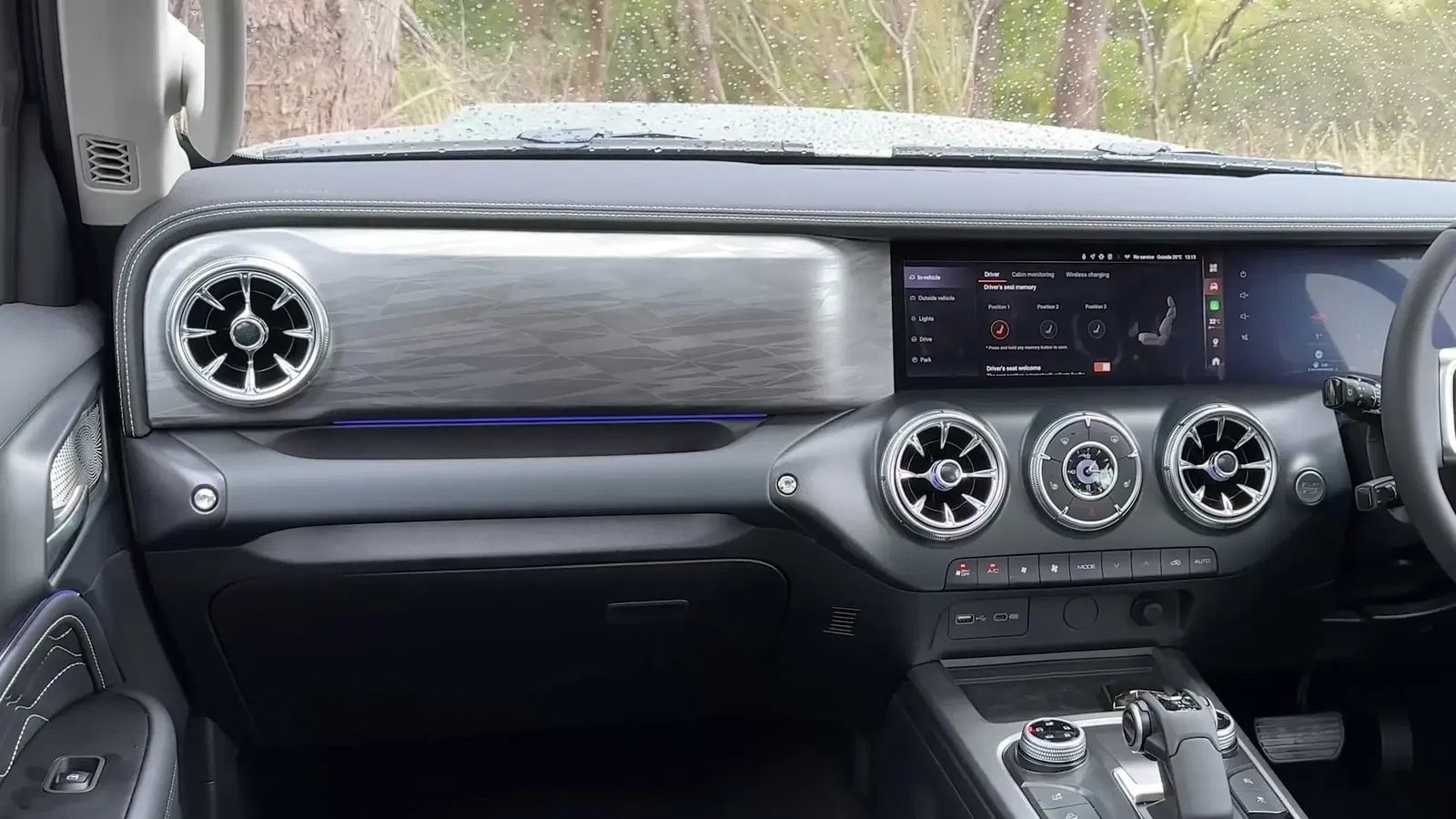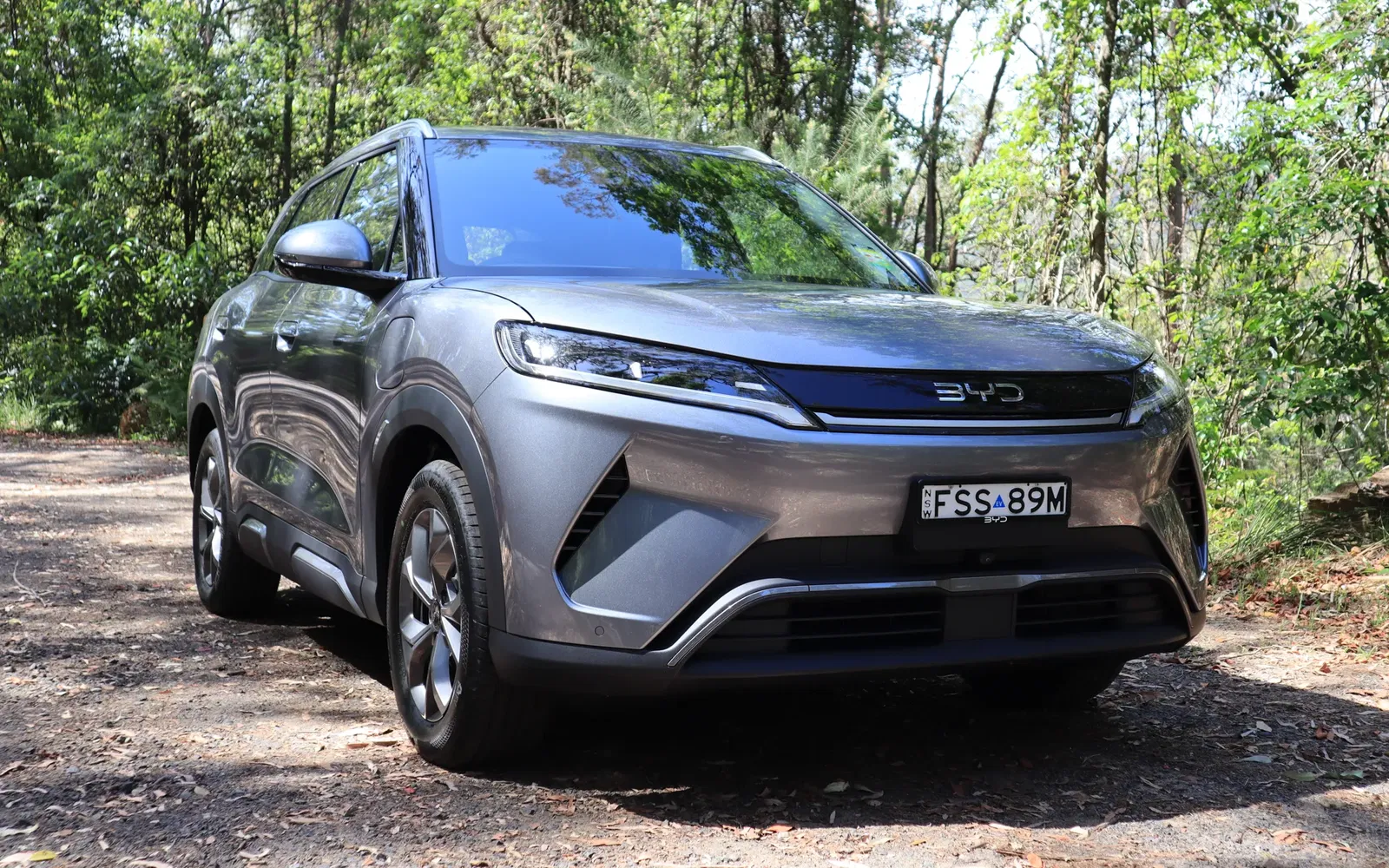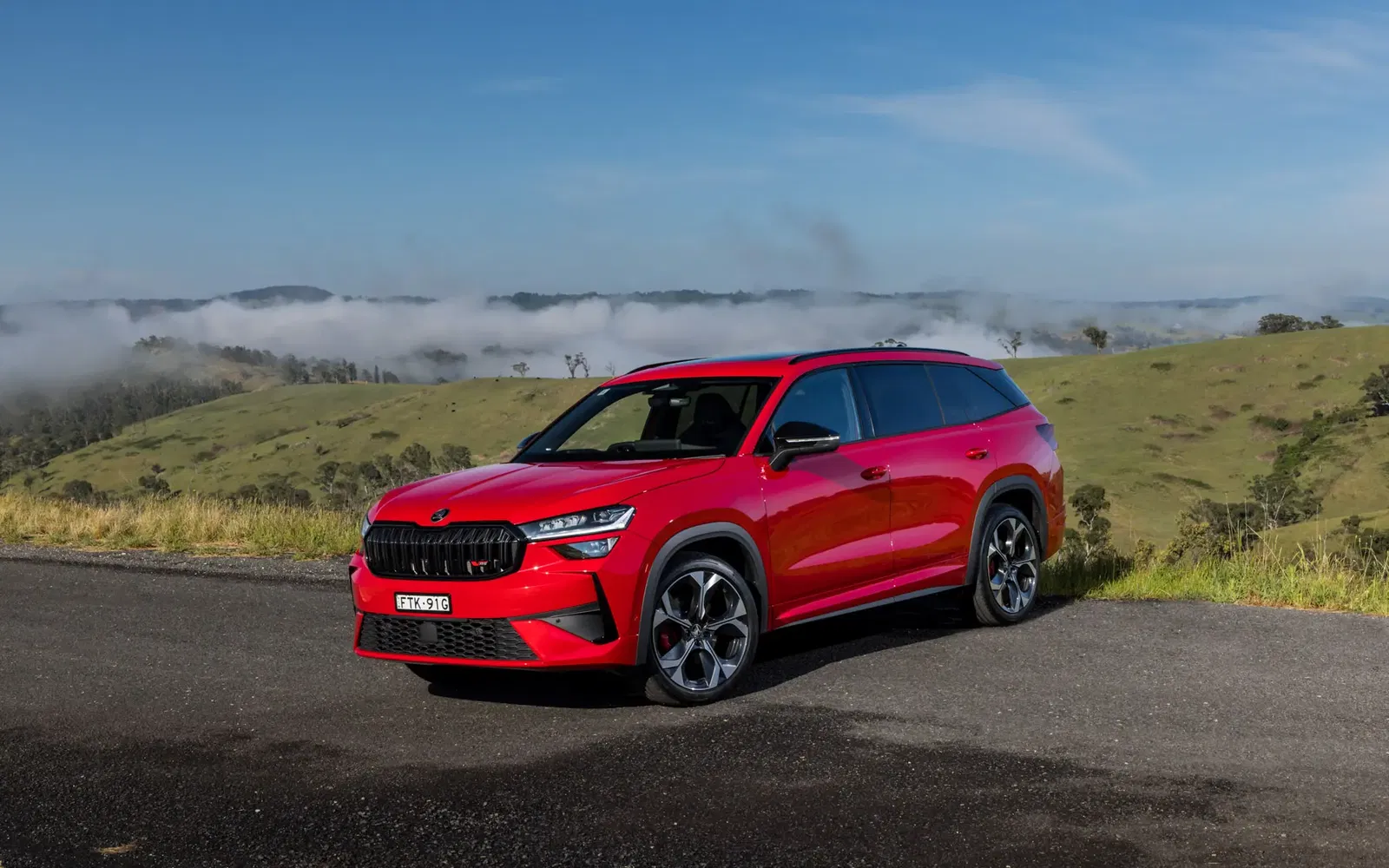
2025 GWM Tank 300 Diesel Review
The diesel-powered Tank 300 brings serious towing capability and payload upgrades, but minor fuel efficiency gains and missing features might hold it back.
A
UNGRADED

A
UNGRADED

What people are saying:
Pros
- Significant towing and payload upgrade
- Impressive off-road tech and capability
- Plush, feature-rich interior for the price
Cons
- Fuel economy falls short of claims
- No all-terrain tyres offered, even as an option
- Adaptive cruise distance calibration still lacking
The 2025 GWM Tank 300 Diesel is more than just a new powertrain - it marks a significant step change in the lineup, aimed directly at buyers who demand more real-world capability from their Tank 300. While the petrol and hybrid variants have offered varying strengths, with great off-roading credentials and on-road luxury, neither have particularly excelled in the towing or payload department. That’s where the new diesel steps in.
Powered by a 2.4-litre turbo-diesel engine shared with the facelifted GWM Cannon, it’s backed by over 20 mechanical upgrades under the skin, including stronger brakes, improved wheel bearings, and reinforced rear differential housing. Combined with a 3,000kg towing capacity and an upgraded 600kg payload, this variant clearly targets the adventurous, towing-savvy segment.

But many of the quirks we noted in the petrol still linger - such as the poorly calibrated adaptive cruise system and the use of highway terrain tyres out of the box. These are areas GWM has yet to fully address.
So the question is: with its increased torque, improved payload, and solid real-world economy, does the diesel make a convincing case as the best Tank 300? Or do the familiar frustrations hold it back from being truly great? Let’s break it down.
How much does the GWM Tank 300 cost?
The diesel version of the GWM Tank 300 is available in two grades. The base Lux model starts at $47,990 drive-away, while the Ultra grade comes in at $51,990 drive-away. Both offer strong value when considering the included equipment and drivetrain upgrades.

2025 GWM Tank 300 Pricing:
- Tank 300 Lux Petrol - $45,990 drive-away
- Tank 300 Lux Diesel - $47,990 drive-away
- Tank 300 Lux Hybrid - $50,990 drive-away
- Tank 300 Ultra Petrol - $50,990 drive-away
- Tank 300 Ultra Diesel - $51,990 drive-away
- Tank 300 Ultra Hybrid - $56,990 drive-away
Modern Toughness with Retro Cues
From its circular LED headlights to the oversized grille, squared-off bumpers and bulging fender flares, the Tank 300 Diesel continues to deliver a commanding and distinctive off-road aesthetic. The design blends retro cues - like the squared-off shape and round headlights - with modern execution, giving it a strong road presence. Details like the integrated LED turning fog lights, metallic roof rails, side steps, and full-size spare wheel mounted on the side-hinged tailgate reinforce its purpose-built nature.

But despite the new diesel powertrain and over 20 mechanical changes underneath, nothing has changed in terms of visual design. The only exterior update is a subtle '2.4TD' badge at the rear, denoting the turbo-diesel engine under the bonnet. If you weren’t told this was the diesel variant, you’d be hard-pressed to tell it apart from the petrol model - a testament to GWM’s confidence in its original styling.

The Tank 300 Ultra Diesel rides on 18-inch alloy wheels, giving it a planted stance without compromising the sidewall for light off-roading. However, it still ships with Michelin Primacy SUV highway terrain tyres, which are more road-biased and somewhat at odds with the vehicle’s off-road intent. GWM has yet to offer all-terrain tyres from the factory or as an optional upgrade, which feels like a missed opportunity.

Luxury That Surprises
Step inside and it’s clear GWM hasn’t skimped on the wow factor. The Tank 300 Diesel’s cabin looks and feels significantly more premium than what you’d expect at this price. Soft-touch quilted materials line the doors, while the dash and seats are wrapped in faux-Nappa leather. The design feels like part luxury SUV, part rugged off-roader, with turbine-style air vents, exposed screw details, and cool ambient lighting details that span the cabin.

Infotainment duties are handled by dual 12.3-inch displays—one for the instrument cluster and one for the central touchscreen—both of which are sharp, bright and responsive. Wireless Apple CarPlay and Android Auto, which is now standard across the range. While this feature has rolled out to other GWM models in recent months, its inclusion here finally modernises a previously outdated point of the system.

Elsewhere, not much has changed compared to the petrol variant. The Ultra grade still offers heated and ventilated front seats, a massage function for the driver, and a heated steering wheel. Physical climate controls remain - a welcome feature - alongside smart storage options and plenty of USB ports. It’s a familiar interior by now, but one that still impresses for comfort, functionality and presentation.





Spacious and Well-Appointed
Rear passengers enjoy excellent legroom and generous headroom, making the back row surprisingly accommodating even for taller adults. The seating position is comfortable, and there’s a noticeable dip in the roof lining to maximise head clearance. Soft-touch materials continue through to the doors, including the same quilted faux leather found up front, adding a sense of cohesion and comfort.
Amenities include two USB-A ports, rear air vents, and a fold-down centre armrest with cupholders. While USB-C would have been a welcome update, the available connectivity still covers the basics. Ambient lighting also extends into the rear cabin, maintaining a premium feel at night.
Practicality is boosted by the ability to lift the rear seat bases to access extra storage underneath, similar to what you'd expect in a dual-cab ute.


Boot Space Built on a Ute Platform
You get 400 litres of boot space with the seats in place and up to 1,635 litres when folded, thanks in part to the Tank 300’s shared platform with the GWM Canon ute. The boot itself is boxy and wide, making it easier to load bulky items, though the high loading lip may pose a challenge for some users. The floor is relatively flat when the seats are folded down, making it suitable for larger hauls or even car camping setups.

The rear door opens via a side hinge - convenient in wide-open areas but potentially not great in tight car parks. Still, it houses a full-size spare wheel and feels solid and rugged in operation. Under the boot floor, you'll find a subwoofer and space for the tyre repair kit.
There are also a few thoughtful features inside the cargo area, including bag hooks, small side cubbies for loose items, and a netted central pocket. Though the boot isn’t segment-leading in outright capacity, it is a very usable and practical space.

Powertrain, Towing and Engineering Upgrades
The new 2.4-litre turbo-diesel engine produces 135kW and 480Nm, delivering a full 100Nm more torque than the petrol variant. Paired with GWM’s in-house developed 9-speed automatic transmission, the powertrain offers smooth and linear acceleration, making it particularly well-suited for towing and low-speed control. It also provides a more relaxed driving experience at highway speeds, with the gearbox doing a good job of keeping revs low.

A key addition to the diesel is the part-time four-wheel drive system with selectable 2H, 4H, and 4L modes, offering flexibility for different surfaces and conditions. Unlike the full-time system seen on the rest of the range, the part-time setup maximises towing efficiency and reduces drivetrain wear on sealed roads. A rear locking differential comes as standard, and the Ultra variant further benefits from a front differential, which greatly enhances traction in challenging terrain.
To support the diesel’s greater towing and payload demands, GWM has implemented over 20 mechanical upgrades. These include strengthened front knuckles, uprated brake callipers and rotors, reinforced rear differential housing, beefier wheel bearings, and improved driveshaft welding. The result is a more robust platform capable of handling serious loads.

Thanks to these enhancements, the diesel Tank 300 boasts a 3,000kg braked towing capacity—an increase from the petrol’s 2,500kg rating. Payload capacity has also been improved, now rated at 600kg, giving it more flexibility for touring setups, gear-hauling, or even dual-use family and work duties.

Quiet, Composed and Comfortable
The diesel is noticeably quieter than rivals like the Isuzu MU-X, which is impressive given its boxy, upright shape. Wind noise is present at highway speeds, but road and engine noise are surprisingly well contained. The cabin insulation, paired with soft-touch materials and acoustic glass, makes this one of the quieter ladder-frame SUVs in its segment.

Ride quality continues to impress, particularly given the Tank 300’s body-on-frame construction. It soaks up bumps and road imperfections with ease, without ever feeling floaty or disconnected. Even over broken surfaces and gravel roads, the suspension feels composed, making the Tank 300 Diesel well-suited for long-distance touring. The relatively short wheelbase does result in some pitch over undulations, but it never becomes unsettled. Previously, people reported an issue that the Tank 300 would face; when under hard braking the rear wheels would lift off momentarily - it is my understanding that this has since been addressed by GWM.

The steering is light and manageable around town, but as with the petrol version, it lacks a bit of precision on the open road. Body roll is well-controlled for a high-riding SUV, though this is still a 2.3-tonne vehicle and it never fully hides its mass in corners. Nevertheless, it inspires more confidence than many would expect, and its elevated driving position and visibility are excellent.

Some semi-autonomous features have seen improvement, particularly the lane centring and driver monitoring systems, which are now less intrusive and better calibrated than before. However, the adaptive cruise control continues to be a weak point—maintaining an unnecessarily long following distance, even at its shortest setting. It’s not a deal-breaker, but for a vehicle marketed with advanced safety tech, it remains one of the few lingering annoyances on the road.
Ready for the Rough Stuff
With 700mm of wading depth, the Tank 300 Diesel sits among some of the most capable off-roaders in its class. It features 33-degree approach, 23-degree breakover, and 34-degree departure angles, allowing it to tackle steep inclines and rugged terrain with ease. Ground clearance comes in at 224mm, which is solid for factory spec, though a tyre or suspension upgrade would improve this further.

The part-time four-wheel drive system lets you switch between 2H, 4H and 4L modes via a rotary selector, giving you precise control over traction depending on the surface. The Ultra grade tested here also includes front and rear electronically locking differentials, significantly enhancing grip on slippery or uneven trails. Off-road drive modes like Mud, Sand, Rock, and Mountain tailor throttle response, braking and diff engagement to suit specific conditions. One standout feature is 'Conqueror View,' which provides a low-speed, under-chassis camera angle—excellent for rock crawling or navigating obstacles.

Crawl control, hill descent control, and 'Tank Turn'—a tight-radius turning aid—further enhance its off-road repertoire. The upgraded diesel drivetrain provides more usable low-end torque than the petrol, which shines when climbing steep inclines or creeping over rocks. That said, the inclusion of Michelin Primacy SUV highway terrain tyres limits traction in serious off-road scenarios. Swapping them out for all-terrains would immediately expand the Tank 300 Diesel’s capability and unlock its full potential.

Full Active Safety Suite
The Tank 300 Diesel continues to offer a comprehensive safety package, with seven airbags—including a front-centre airbag—standard across the range. Active safety features include autonomous emergency braking (AEB), lane departure warning, lane keep assist, blind-spot monitoring, rear cross-traffic alert, and a 360-degree surround view camera system.
Adaptive cruise control with traffic sign recognition and driver monitoring functionality is also included, contributing to its strong active safety credentials. Though the adaptive cruise system’s calibration could be better, its presence is nonetheless a reassuring inclusion.
Importantly, the Tank 300 has previously been awarded a 5-star ANCAP safety rating, and this carries over unchanged to the new diesel variant. The structural and safety hardware remain identical, ensuring that diesel buyers benefit from the same crash protection and safety assistance systems as those opting for petrol or hybrid versions. The official ANCAP scores were:
- Adult Occupant Protection: 88% (33.47 out of 38)
- Child Occupant Protection: 89% (43.81 out of 49)
- Vulnerable Road User Protection: 81% (43.85 out of 54)
Safety Assist: 85% (13.60 out of 16)

How much does it cost to own the Tank 300 Diesel?
A 7-year/unlimited kilometre warranty, five years of roadside assistance, and capped-price servicing give peace of mind. Fuel efficiency, while better than petrol, was observed at 10L/100km—above the 7.8L/100km claim.

Servicing Costs (Tank 300 Diesel)
- 12 months/10,000km: $360
- 24 months/25,000km: $435
- 36 months/40,000km: $610
- 48 months/55,000km: $555
- 60 months/70,000km: $725
- 72 months/85,000km: $1055
- 84 months/100,000km: $505
What do you get with the 2025 GWM Tank 300 Diesel?
Lux Diesel:
- 2.4L turbo-diesel (135kW/480Nm)
- Rear diff lock
- Crawl control
- 12.3-inch touchscreen & digital cluster
- Wireless CarPlay & Android Auto
- 360-degree camera
- Faux leather seats
- LED headlights, 17-inch alloys
Ultra Diesel (adds):
- Front diff lock (electric)
- Nappa leather-accented seats
- Heated & ventilated front seats
- Massage driver's seat
- Heated steering wheel
- Wireless phone charging
- Ambient lighting (64-colour)
- 9-speaker audio system

Final thoughts on the GWM Tank 300
The 2025 Tank 300 Diesel elevates what was already a surprisingly competent off-roader and turns it into a more serious tool for real-world use. Compared to the petrol and hybrid variants, the diesel delivers a broader spread of torque, improved towing capacity, and much-needed payload upgrade - all underpinned by a suite of mechanical enhancements that genuinely increase its usability. This isn't just a new engine option - it's a much better fit for what this SUV is clearly meant to do.

Interior comfort remains a strong point, with premium features like massage seats, dual 12.3-inch displays, ambient lighting and quilted faux-Nappa leather helping it punch well above its price point. On-road manners are also better than expected, with the diesel variant managing to have good noise insulation and ride comfort. Even semi-autonomous features like lane centring and driver monitoring have seen refinement, though adaptive cruise control remains an issue, and the real-world fuel efficiency still trails GWM’s claims.

But despite these drawbacks, this is unquestionably the best Tank 300 yet. It improves on every meaningful area of practicality and capability while preserving the luxury and value that made the original so appealing. If you’ve been holding off because the petrol was too thirsty or lacked the payload for your gear, this diesel fixes those concerns. For buyers looking for serious off-road ability, daily refinement, and genuine tow-readiness without spending big money, the Tank 300 Diesel is a compelling - and now, well-rounded - option.

Saucey rating breakdown
Saucey rating breakdown
FAQ
Sign up to our newsletter
Be the first to know when we drop new car reviews.
.avif)




%20Calligraphy%20-%2003.webp)